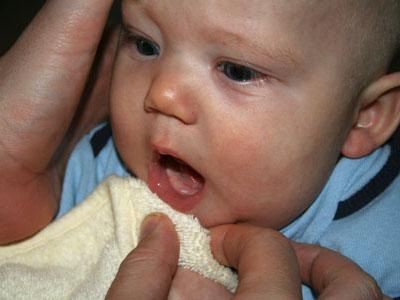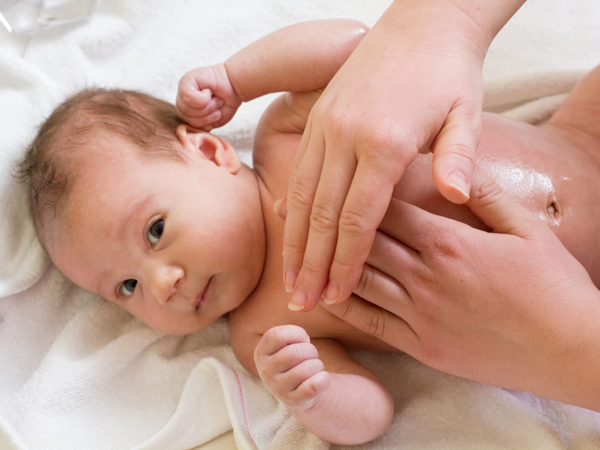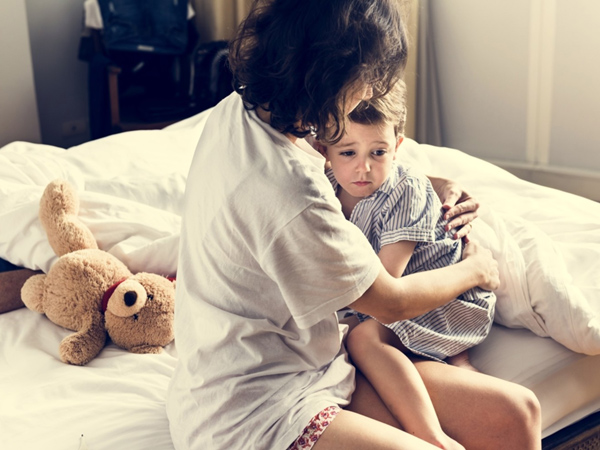The first years of a child's life always bring many surprises and joys for those who are parents. Here are some memorable milestones between birth and baby 18 months.
content
9 milestones of baby development
The baby laughs at 8 weeks old
Babies start to flip when they are 2 to 3 months old
Children 3 to 4 months are able to hold and hold
Baby will hug in the 5th month
Peek-a-boo (when your baby is 6 months old)
8 months baby begins to sit
babies 6 to 10 months can crawl
10 months baby begins to stand
Babies about 10 to 18 months start to walk
9 milestones of baby development
Therefore, understanding the important developmental milestones of children will help parents reduce anxiety and increase confidence in nurturing and caring for their children. And if you also agree with this idea, do not hesitate, immediately read the information below about 9 important milestones in the child's development process.
Parents will know when the baby starts to have activities such as the beginning to start stiffening the neck so that the baby can turn over, then learn to crawl, crawl, and practice standing rope in the last month. In what month will children take their first steps?
The baby laughs at 8 weeks old
If someone tells you that your baby is smiling when he is 3 or 4 weeks old, this information is inaccurate. Because the neural system of the baby's brain and vision takes a longer time to complete, so that the baby can recognize and smile back when receiving loving gestures from parents. Usually, a newborn baby will laugh when he or she is 8 weeks old.
Laughing is a baby's primary social skill and also a sign of emotional development . Babies can distinguish different emotional states by expressing their emotions like smiling, happy seeing their dad or mom, or sad when they don't have a parent around.
Babies start to flip when they are 2 to 3 months old
During the 2-3 month period, you should spend a lot of time observing your baby. Because during this time, the baby starts to perform movements such as pushing up, shaking back and forth, or kicking the legs ... and when strong enough, the baby will roll through easily (the baby may startle or cry at first times).
However, usually babies can turn over completely by about 5 months old. At this time, the baby is really strong and can coordinate well with the above movements to flip. What you need to do is let your baby practice this on his own and make sure he stays in a safe place when he tries to do this.
Children 3 to 4 months are able to hold and hold
After the first few months, babies begin to judge the position of objects in space, and can handle and grasp them quite well. By letting your baby learn to drop and capture objects, the mother will help her learn how to control her hands skillfully as well as how to play with toys .
At this stage, your baby will be able to play the shaking drum on his own and know how to make the drum sound. Once they are able to hold and grasp everything, they will feel excited and participate more in play even though they are alone.

During the first months of life, babies show emotions through their animations
Baby will hug in the 5th month
By observing and imitating the movements of adults when hugging each other, babies can learn how to hug their parents, loved ones and their favorite things (teddy bears, dogs, cats) quickly. fast.
However, not all children respond to these hugs. Some babies are due to a natural reaction, and some are too engrossed in playing and exploring their surroundings that often show discomfort when being cuddled. Therefore, if the baby is a little "cranky" when being hugged, you should not try to force the baby according to your will. Instead, you can read books to your baby, hug him before he sleeps. This is the time when babies are more receptive to their parents' feelings.
Peek-a-boo (when your baby is 6 months old)
This is a simple game but interesting and can be played over and over with your baby. Once your baby understands how to play and is excited, even though he cannot see your face, he will keep an eye on your movements and be eager to see your face after the hum.
A few months later, your baby can play by hiding his face from you. A few tips to make the game more interesting for your baby:
a) You sit close so the baby can look you in the eye. This helps your baby focus on your actions.
b.Please ask your baby, "Where is Mom?" while playing. Your voice will give your baby peace of mind that you are still there.
c) Change the amount of time you hide from your baby, sometimes fast, long, and raise your voice, down when talking to your baby to make the game more engaging (and you also feel less monotonous).
8 months baby begins to sit
When your baby is able to balance, his arms are stronger and can control the head, neck, and lower body, he will try to sit up. At this time, the baby's vision changes, allowing him to observe in a wider range. When they notice these new things, they will try to lean taller to see more.
The first times, the baby will not be able to sit for long by itself, so you can help spread his arms out for him to balance. To encourage your baby to sit, gently rock your baby and place your baby's fancy and favorite items in front of you. Then, slowly move the toys from side to side to practice your baby's balance and get used to sitting.
babies 6 to 10 months can crawl
At this stage, babies will use their hands and knees to crawl or crawl. But there are still a few babies who will not crawl like that but will use their legs, stomach to slip on the floor or even curl up.
At this point, you should clean the spacious room, remove obstacles so that your baby can freely move. Then, put items that your baby's favorites are but out of reach to encourage movement. In addition, you should pay attention to lay a soft, smooth carpet on the floor for your baby's safety and finally perform this gesture with your baby (maybe both parents participate).
10 months baby begins to stand
By about 8 months old, the baby can perform many movements such as rolling over, sitting up, crawling. Also during this time, you can help your baby practice standing up because then the body and muscles, as well as the legs have become strong.
New time learning to walk , she can dug hold onto anything that we think is certainly as a side cribs, sofas handrails, or mother's leg. For your baby's safety, you should carry unstable objects, sharp-edged objects or objects that could endanger your baby. By about 10 or 12 months, when the baby is standing and does not need to hold an adult's hand, he can know how to bend his knees to sit down or stand up.
Babies about 10 to 18 months start to walk
Your baby's first steps mean a lot in a baby's life. One of the differences between walking and crawling is the change in the height of the body center of gravity. Therefore, to have steady steps, it requires your baby's muscles to be strong enough, coordinated, balanced and a little confident.
When babies are in their toddler stage, they tend to cling to the furniture in the house and walk along. Observing that the baby is eager and does not turn back to look, it means that the baby is taking very good first steps.
Basically, being able to walk gives babies the opportunity to develop other hand-related skills and change vision. Therefore, you can train your baby to improve his ability to react, interact as well as learn and feel more about his surroundings by combining skills with grasping, expressing emotions ... learned earlier while baby was gone. For example, you give your baby a small toy duck and ask him to take it towards him. When your baby arrives and gives you the toy duck, say "thank you, mom" and pretend to squeal a few times (to make him happy). Then you return the toy to the baby and say "goodbye duckling".












